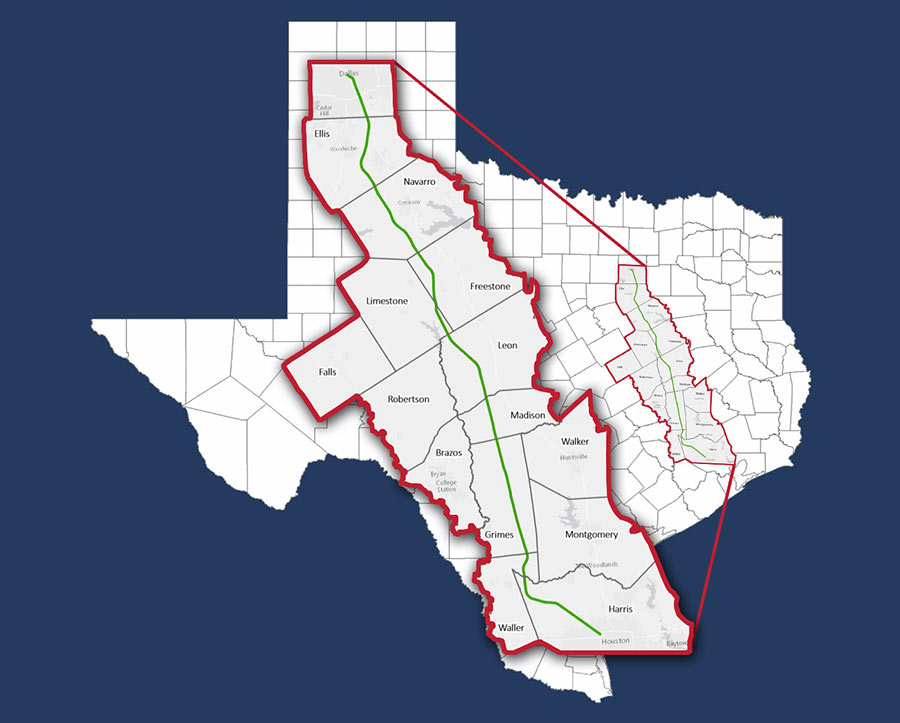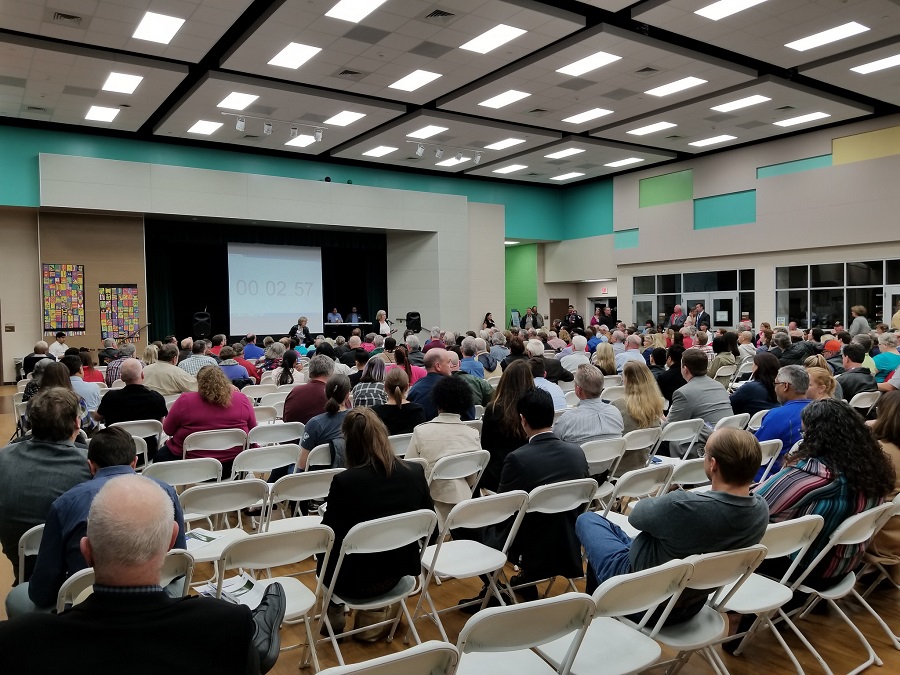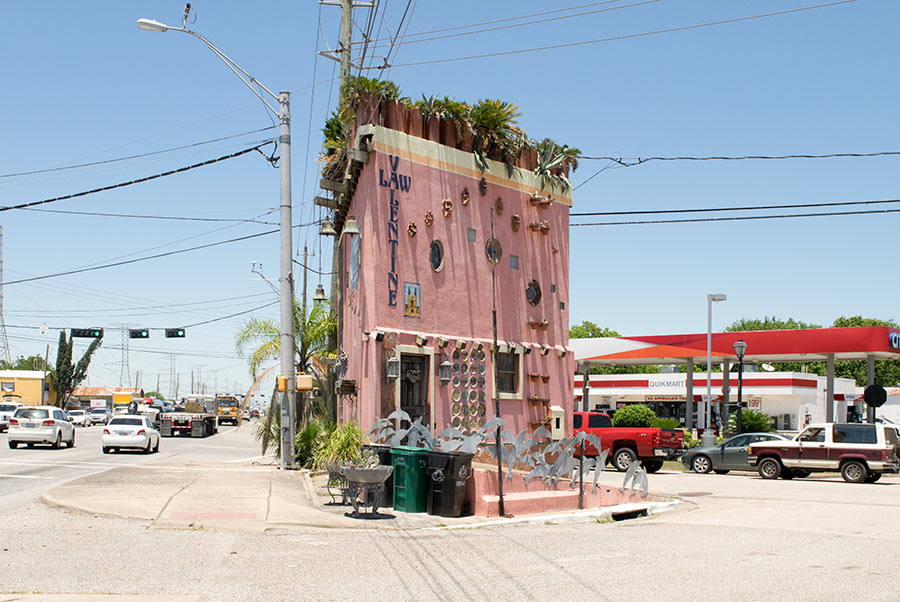PICKING THE TEXAS T-BONE: NOT NUMBER ONE WITH THAT BULLET Texas may be way behind other states vying for chunks of the $8 billion in stimulus money the feds are handing out for high-speed rail projects, but it’s getting in line: “Texas is asking for $1.7 billion to speed development of a super-fast passenger train linking Dallas to Austin to San Antonio, and with a spur to Houston. Federal guidelines for the funds make it unlikely that such a big amount will be awarded to Texas, given how little preliminary work — such as environmental studies, feasibility reviews or right of way acquisition — has been done on the bullet train proposal. Still, TxDOT spokeswoman Karen Amacker said today, “it never hurts to ask,” and noted that the guidelines for the grants released in June are themselves in draft form. . . . [U.S. Secretary of Transportation Ray] LaHood said even states, like Texas, who have so far done little to advance high-speed passenger rail will be considered for the grants.” [Transportation Blog, via Off the Kuff]




“a spur” to the biggest city in the state and the 4th largest in the country…TxDot continues to be a joke. I’m surprised they aren’t asking for funds to double the lanes on the Katy Freeway again, since concreting over cities is what they do best.
I appreciate Mr. LaHood trying to save us from ourselves.
So little work done? There was a ton of feasibility work for the same route (acquisitions and route) in the early 90s as part of an ISTEA proposal. And more than just ground work. It was a serious proposal to acquire federal transportation dollars.
OK, now I’m remembering. After spending the early 90s trying to drum up private dollars to fund the Texas triangle and against a hefty SW Airlines lobby, the plan was dropped. But it was a serious plan, no?
John,
It’s makes perfect sense to put Houston separate on any high speed rail. The problem most people don’t realize is a language barrier.
Most people think when the FEDs say high speed rail, they mean people. They don’t. They actually mean freight for most high speed corridors, especially Texas.
The high speed corridor Houston is on basically says we aren’t part of Texas. We are to be connected to the Gulf Coast with New Orleans with no connection to the rest of Texas (other than Beaumont).
TxDOT sees it different, but the only way they add Houston to the mix is if they T us in along the Federal high speed corridor that pretty much follows I-35.
The reason we are connected to New Orleans is that the Port of New Orleans and southeast Lousiana and southern Mississippi blow Houston away with freight tonnage. Actually, New Orleans alone does that.
The master planned “goods” corridors for the North America doesn’t care about state lines. I-35 presents a corridor from future ports along the Mexican Pacific Coast that will connect to the I-35 corridor and carry goods towards Kansas City.
Houston falls in line with ports along the Gulf Coast.
All this has been under plans since the 90s with NAFTA. Clinton, Bush, and the current President are all in line with this. The whole Trans Texas Corridor fiasco is a part of this. Many people think that the TTC is gone. It isn’t. It’s just being renamed and packaged. The Supreme Court decision in Kelo vs (Connecticut City) paves the way for use of eminent domain for anything. Citizens of Texas stalled the TTC, but they won’t be able to stop USDOT from forcing it to happen.
So when pro high speed rail politicians talk, be very cautious. It’s not about moving people. At least not at what ultimately occurs in the Bureaucracy.
The feasability work I’m remembering predates NAFTA, and it moved people, not goods. ISTEA was definately tapped, unsuccessfully.
I know of the feasibility work. I know it was to move people. That doesn’t matter. NAFTA came in re-designated corridors for high speed rail (moving anything). For federal funding, you have to utilized those corridors. A link to Houston from the I-35 corridor does not fall in the master plan.
Welcome to the world where the federal govn’t dictates how our state improves mobility versus us deciding.
We (states) are as free to decide as we are free to fund it without federal dollars.
And we would be a lot freer if we didn’t have to send the funds to the feds in the first place if it were to come back to us in the end!
Ahhh, but that is common sense. That has no place in D.C. since the 1870’s.
If public transportaion piggy backing on goods moving (without too much consequence to real commuter type people moving) makes better sense, great. Perhaps the two should be considered together, a public/private partnership. Perhaps there are people moving lessons to be learned from the mass transportation of goods.
I agree Radburn. Outside the immense cost to get high speed rail off the ground and moving, the concept of moving people rather quickly and avoiding the silly airport security procedures would be a very effective way to move people.
A 45minute flight from Houston to Dallas takes about 3 hours for many people (of course I’ve ran through security a break neck speed before in Houston). The security guys are getting better with commuters for business.
kjb434,
That sounds like an entirely different subject that logically leads to succession from the Union of States. You can’t have it both ways. We enjoy protections unlike any in the world and enormous benefits from being part of the Union that have to be paid for. There is no guarantee that the redistribution will be equal among the states. If we don’t like the ways the monies are collected or spent, we are free (again) to elect representation that will make the adjustments that we desire. Or you could choose to live in a state that receives more than it gives, if that is important to you. Frankly, I’m happy to be living in Texas vs. Mississippi. It’s not simple, but it’s what we’ve got.
For anybody who is interested, the link below will take you to the FRA website about high speed rail corridors for the US.
http://tinyurl.com/6s94zd
kjb and Radburn,
One of things that makes high-speed rail so effective and efficient in Europe and Asia is that most major cities there have comprehensive public transportation systems, usually light rail, streetcars, and subways connected to it. Unless Texas redoubles its efforts to build commuter and light rail in Houston, Dallas, Austin, and San Antonio, high=speed rail for moving people will not live up to its potential here.
High speed rail in Texas won’t happen in my lifetime (and I’m not that old). TXDOT has basically sold its soul to highways and (as John mentioned) we lack the public transit infrastructure to compliment such a system. While we were growing we could have added such infrastructure along the way but we were too cheap, short-sighted and frankly, stupid.
And finally, given this state is completely in bed with the “No Spending/Leave Me Alone” wing of the Republican Party, we are unlikely to see a lot of help from the feds (which is needed). Texas Congressmen spend all their time blasting such projects and voting against them (and our interests). So, states like Massachusetts, New York and California get money for these projects and we get left out in the cold.
What most people fail to grasp is that light rail is THE most expensive mass transit solution for a city like Houston. Utilizing buses makes tons more fiscal sense due to the layout of the Houston metropolitan area. But never mind facts, when Metreaux is involved, facts are things to be repressed, not trumpeted. High speed rail could most certainly be linked to effective bus routes managed prudently for a fraction of the cost of installing, operating and maintaining light rail lines. But that’s not whirled class enough.
I really wish people on here would learn about something before posting.
TxDOT can’t do rail. It’s not in there power to do it. TxDOT works as the mercy of the Texas Transportation Commission. Currently the Commission is under sunset which means it’s purpose is under review. The rules they run by can be altered at this time and then they move forward. The last time the Commission was under sunset was when the whole toll road kerfuffle moved front and center. Unless our legislature and the sunset commission specifically give TxDOT the power to move into the passenger rail busines, it won’t happen. It’s not TxDOT’s fault, they are just doing what they are told.
And just as I was told about transportation funds, you’ll need to support candidates that support high speed rail in the state legislature to be able to change the rules TxDOT runs on.
Okay, Texas (and as a consequence TXDOT) has sold its soul to highways.
Also,
The current rail road companies are just as guilty as highway interest. They have managed to keep TxDOT out their hair for many years.
In some of my experiences with TxDOT from a work related and non-work related standpoint, they abhor working with the rail road companies.
In Houston, UPRR has TxDOT, City of Houston, and Harris County tied down. For any new at grade railroad crossing or expansion/improving of an existing rail road crossing, they must remove two existing ones. There are regional plans right now to remove tons of minor rail road crossings. People that live in the West End and Rice Military areas may have already heard about this. All the minor street crossings are under the plan to be closed. TC Jester, Durham and Shepherd are to become grade separated crossings too. This is all so UPRR can consider allowing the County and METRO to have commuter rail.
Most high speed rail plans involve massive rehabbing existing rail corridors that could be modernized for speed. Many of our long distance corridors in Texas are quite straight, but the rail road companies are resisting. They are dedicated to serving their freight customers first.
For comparison, the LaDOTD next door to us has a lot of power over rail road corridors. My guess this goes back to Huey P. Long in the 30s who always fought them.
Anyway, the highway interests aren’t the only ones stopping the move. Also, Southwest Airlines has a role in this also since their Texas commute business would potentially collapse if a high speed passenger rail system were to be built.
Kjb34
Does your employer know how much time you spend educating the rest of us “doofuses” on
his dime?
Absolutely!
I have two computers running hydrologic and hydraulic models all the time. My responses occur when they are bogging down my computer to point where I can only do email and post on a website. Dynamic 2D flood models cripple computers and take about 2-4 hours to run. My posting lightens up when I’m not running those.
As much as I tell I learn about things going around. If a massive development project is being planned in an area, the could turn into more work for me or others in the firm. It’s kind of like business development without paying someone for it.
We’ve got some leads on potential projects from Swamplot Posts, HAIF forums (don’t got there often), Houston Strategies post, and Blog Houston. I also have correspondence with people involved with various civic groups in the city.
I’m pretty much trying to multi-task.
That’s why I pretty much post during the day and not after work hours.
Of course not everything is work related in the posts though.
I’m confused by all this “freight” talk. Nothing on any of the websites mention that highspeed rail would have anything to do with freight movement. It appears to be specifically designed for transporting people. Nevermind that tracks supporting high speed rail would have to be devoted entirely to high speed rail and, last I checked, a freight train isn’t going to manage speeds of 200 mph.
LOL @ Melanie.